IVF (In Vitro Fertilization) cost in Turkey varies between TRY 120560 to 211070 (USD 4000 to 7003) approx.
InVitro Fertilization is a common procedure that is opted by people who are not able to have a baby on their own by any natural process. It comes under the assisted reproductive procedures, meaning that the reproduction is helped to take place by external factors.
In vitro fertilization is common as well as a very safe procedure. This can be attributed to the fact that there are no cuts or any pain that will be caused to the female or the male during the procedure. And hence it is preferred to be done in experienced countries like Turkey. Turkey has a high concentration of hospitals and medical institutes that offer the In vitro fertilization procedure at very affordable rates.
| City | Minimum Cost (USD) | Minimum Cost (TRY) | Maximum Cost (USD) | Maximum Cost (TRY) |
|---|---|---|---|---|
| Samsun | USD 3200 | 96448 | USD 5602 | 168844 |
| Trabzon | USD 3600 | 108504 | USD 6302 | 189942 |
| Fethiye | USD 3600 | 108504 | USD 6302 | 189942 |
| Zonguldak | USD 3200 | 96448 | USD 5602 | 168844 |
| Ordu | USD 3200 | 96448 | USD 5602 | 168844 |
| Ankara | USD 4000 | 120560 | USD 7003 | 211070 |
| Sivas | USD 3200 | 96448 | USD 5602 | 168844 |
| Canakkale | USD 3200 | 96448 | USD 5602 | 168844 |
| Tokat | USD 3200 | 96448 | USD 5602 | 168844 |
| Elazig | USD 3200 | 96448 | USD 5602 | 168844 |
| Country | Minimum Cost | Minimum Local Currency | Maximum Cost | Maximum Local Currency |
|---|---|---|---|---|
| India | USD 3500 | INR 291025 | USD 4500 | INR 374175 |
| Thailand | USD 8000 | THB 285200 | USD 14000 | THB 499100 |
| Turkey | USD 4000 | TRY 120560 | USD 7003 | TRY 211070 |
| United Arab Emirates | USD 6000 | AED 22020 | USD 7000 | AED 25690 |
Treatment cost
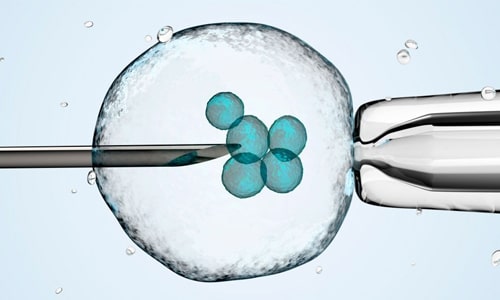
Some of the key inclusions which we provide as additional benefits of the package are:
We offer packages at reasonable pricing that include a variety of additional advantages, making it a better deal than paying for individual perks at the hospital. In Vitro means �Outside the Body�. It is a process of egg fertilization with the sperm outside the body in an embryology laboratory. The process allowed many successful pregnancies in women who were previously deemed infertile. The procedure of IVF involves removal of eggs directly from the ovary, then the eggs are fertilized with sperm in the laboratory, followed by transfer of the embryos directly into the uterus, thereby bypassing the tubes., Grab this comprehensive & discounted package on IVF at Fakih IVF Fertility Center - Dubai, United Arab Emirates.

MediGence is offering immense facilities for your medical journey such as:
We offer packages at reasonable pricing that include a variety of additional advantages, making it a better deal than paying for individual perks at the hospital. In Vitro means Outside the Body. It is a process of egg fertilization with the sperm outside the body in an embryology laboratory. The process allowed many successful pregnancies in women who were previously deemed infertile. The procedure of IVF involves removal of eggs directly from the ovary, then the eggs are fertilized with sperm in the laboratory, followed by transfer of the embryos directly into the uterus, thereby bypassing the tubes., Grab this comprehensive & discounted package on IVF at Fortis Hospital, Shalimar Bagh, India.
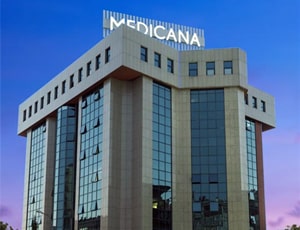
Types of IVF (In Vitro Fertilization) in Medicana Camlica Hospital and its associated cost
| Treatment Option | Approximate Cost Range (USD) | Approximate Cost Range (TRY) |
|---|---|---|
| Overall IVF Cost | 3382 - 5516 | 100369 - 165897 |
| Conventional IVF | 2290 - 4447 | 67315 - 133395 |
| Intracytoplasmic Sperm Injection (ICSI) IVF | 3398 - 5656 | 103527 - 169207 |
DOCTORS IN 14 SPECIALITIES
FACILITIES & AMENITIES
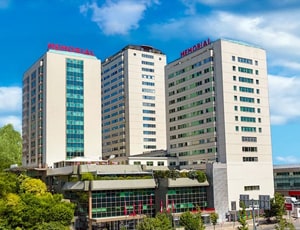
Types of IVF (In Vitro Fertilization) in Memorial Sisli Hospital and its associated cost
| Treatment Option | Approximate Cost Range (USD) | Approximate Cost Range (TRY) |
|---|---|---|
| Overall IVF Cost | 3369 - 5595 | 102057 - 168158 |
| Conventional IVF | 2244 - 4556 | 67517 - 134869 |
| Intracytoplasmic Sperm Injection (ICSI) IVF | 3353 - 5515 | 101381 - 166407 |
DOCTORS IN 13 SPECIALITIES
FACILITIES & AMENITIES

Types of IVF (In Vitro Fertilization) in Memorial Ankara Hospital and its associated cost
| Treatment Option | Approximate Cost Range (USD) | Approximate Cost Range (TRY) |
|---|---|---|
| Overall IVF Cost | 3337 - 5534 | 102498 - 169365 |
| Conventional IVF | 2209 - 4440 | 67387 - 132958 |
| Intracytoplasmic Sperm Injection (ICSI) IVF | 3394 - 5662 | 102311 - 168926 |
DOCTORS IN 12 SPECIALITIES
FACILITIES & AMENITIES

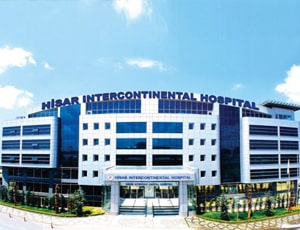
Types of IVF (In Vitro Fertilization) in Hisar Intercontinental Hospital and its associated cost
| Treatment Option | Approximate Cost Range (USD) | Approximate Cost Range (TRY) |
|---|---|---|
| Overall IVF Cost | 3311 - 5544 | 100021 - 172019 |
| Conventional IVF | 2254 - 4411 | 67842 - 134848 |
| Intracytoplasmic Sperm Injection (ICSI) IVF | 3398 - 5722 | 102615 - 165885 |
DOCTORS IN 12 SPECIALITIES
FACILITIES & AMENITIES
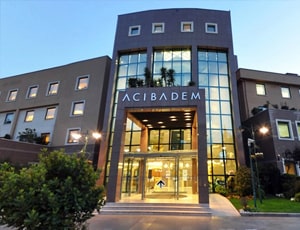
Types of IVF (In Vitro Fertilization) in Acibadem Kadikoy Hospital and its associated cost
| Treatment Option | Approximate Cost Range (USD) | Approximate Cost Range (TRY) |
|---|---|---|
| Overall IVF Cost | 3449 - 5744 | 101976 - 172330 |
| Conventional IVF | 2296 - 4406 | 67874 - 138573 |
| Intracytoplasmic Sperm Injection (ICSI) IVF | 3339 - 5530 | 100467 - 167131 |
DOCTORS IN 10 SPECIALITIES
FACILITIES & AMENITIES
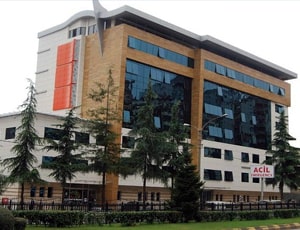
Types of IVF (In Vitro Fertilization) in Medical Park Karadeniz Hospital and its associated cost
| Treatment Option | Approximate Cost Range (USD) | Approximate Cost Range (TRY) |
|---|---|---|
| Overall IVF Cost | 3357 - 5692 | 100736 - 171753 |
| Conventional IVF | 2266 - 4512 | 68125 - 138640 |
| Intracytoplasmic Sperm Injection (ICSI) IVF | 3308 - 5649 | 102138 - 168425 |
DOCTORS IN 11 SPECIALITIES
FACILITIES & AMENITIES
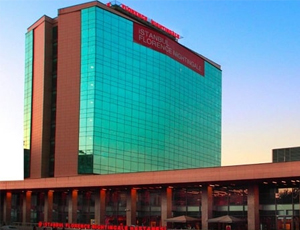
The first green hospital in Turkey, Istanbul Florence Nightingale Hospital, was inaugurated in 2013. Group The Florence Nightingale hospitals are the first Turkish hospitals to be granted Joint Commission International (JCI) accreditation, and they continue to be associated and work with esteemed healthcare organizations.
The Florence Nightingale Group treats 250,000 outpatients and 70,000 inpatients annually, demonstrating its excellence. The hospitals have a capacity of 804 inpatient beds, 141 ICU beds, and 40 operating rooms, and perform 20,000+ procedures annually, of which 1,000 are cardiac operations for children and 2,000 are for adults. For conducting difficult orthopedic, general surgery, minimally invasive, and other heart treatments, the facility stands out. All operating rooms can be interconnected by audio-visual to a 300-person conference room and global hubs, enabling interactive medical teaching and scientific activity.
Interpreter and translator services for languages such as Turkish, Azerbaijani, Bulgarian, Arabic, English, Persian, Serbian, Russian, Albanian, Macedonian, German, Bosnian, and Romanian are available.
The hospital has specialized departments such as Cardiology and Cardiac Surgery, IVF and Infertility, Nephrology, Oncology and Oncosurgery, Spine Surgery, Neurology and Neurosurgery, Orthopedics, Gynecology, and Obesity or Bariatric Surgery. With an extensively qualified and experienced team of advisors and interpreters, Florence Nightingale Istanbul is committed to providing one-stop service from beginning to end, 24 hours a day, 7 days a week.

Types of IVF (In Vitro Fertilization) in Acibadem Altunizade Hospital and its associated cost
| Treatment Option | Approximate Cost Range (USD) | Approximate Cost Range (TRY) |
|---|---|---|
| Overall IVF Cost | 3365 - 5607 | 101412 - 170118 |
| Conventional IVF | 2243 - 4459 | 66415 - 134075 |
| Intracytoplasmic Sperm Injection (ICSI) IVF | 3432 - 5701 | 103920 - 170052 |
DOCTORS IN 12 SPECIALITIES
FACILITIES & AMENITIES

Types of IVF (In Vitro Fertilization) in Acibadem International Hospital and its associated cost
| Treatment Option | Approximate Cost Range (USD) | Approximate Cost Range (TRY) |
|---|---|---|
| Overall IVF Cost | 3392 - 5553 | 100960 - 169203 |
| Conventional IVF | 2266 - 4400 | 67246 - 136138 |
| Intracytoplasmic Sperm Injection (ICSI) IVF | 3342 - 5611 | 99725 - 171764 |
DOCTORS IN 11 SPECIALITIES
FACILITIES & AMENITIES

Types of IVF (In Vitro Fertilization) in Acibadem University Hospital Atakent and its associated cost
| Treatment Option | Approximate Cost Range (USD) | Approximate Cost Range (TRY) |
|---|---|---|
| Overall IVF Cost | 3413 - 5621 | 103796 - 166841 |
| Conventional IVF | 2217 - 4545 | 67924 - 132902 |
| Intracytoplasmic Sperm Injection (ICSI) IVF | 3392 - 5507 | 101988 - 171035 |
DOCTORS IN 11 SPECIALITIES
FACILITIES & AMENITIES
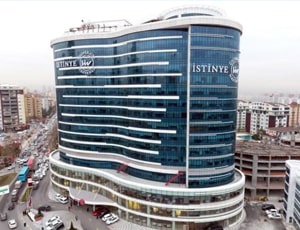
Types of IVF (In Vitro Fertilization) in Istinye University Bahcesehir - LIV Hospital and its associated cost
| Treatment Option | Approximate Cost Range (USD) | Approximate Cost Range (TRY) |
|---|---|---|
| Overall IVF Cost | 3423 - 5550 | 101958 - 168017 |
| Conventional IVF | 2298 - 4503 | 68674 - 133328 |
| Intracytoplasmic Sperm Injection (ICSI) IVF | 3415 - 5569 | 101283 - 168148 |
DOCTORS IN 11 SPECIALITIES
FACILITIES & AMENITIES
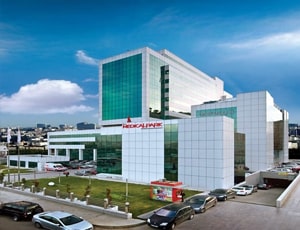
Types of IVF (In Vitro Fertilization) in Medical Park Goztepe Hospital and its associated cost
| Treatment Option | Approximate Cost Range (USD) | Approximate Cost Range (TRY) |
|---|---|---|
| Overall IVF Cost | 3424 - 5545 | 100918 - 168048 |
| Conventional IVF | 2299 - 4528 | 67633 - 133030 |
| Intracytoplasmic Sperm Injection (ICSI) IVF | 3368 - 5686 | 100355 - 167529 |
DOCTORS IN 12 SPECIALITIES
FACILITIES & AMENITIES

Types of IVF (In Vitro Fertilization) in VM Medical Park Bursa Hospital and its associated cost
| Treatment Option | Approximate Cost Range (USD) | Approximate Cost Range (TRY) |
|---|---|---|
| Overall IVF Cost | 3302 - 5717 | 103888 - 172247 |
| Conventional IVF | 2269 - 4430 | 66667 - 132833 |
| Intracytoplasmic Sperm Injection (ICSI) IVF | 3396 - 5693 | 102882 - 170810 |
DOCTORS IN 12 SPECIALITIES
FACILITIES & AMENITIES
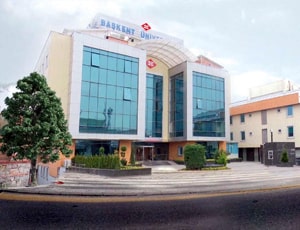
Types of IVF (In Vitro Fertilization) in Baskent University Istanbul Hospital and its associated cost
| Treatment Option | Approximate Cost Range (USD) | Approximate Cost Range (TRY) |
|---|---|---|
| Overall IVF Cost | 3425 - 5748 | 100331 - 172992 |
| Conventional IVF | 2282 - 4434 | 68950 - 135730 |
| Intracytoplasmic Sperm Injection (ICSI) IVF | 3405 - 5651 | 102765 - 166902 |
DOCTORS IN 14 SPECIALITIES
FACILITIES & AMENITIES
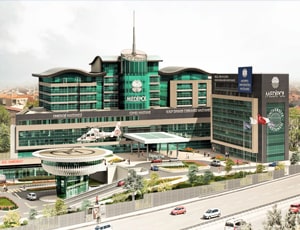
Types of IVF (In Vitro Fertilization) in Medipol Mega University Hospital and its associated cost
| Treatment Option | Approximate Cost Range (USD) | Approximate Cost Range (TRY) |
|---|---|---|
| Overall IVF Cost | 3417 - 5516 | 99864 - 170509 |
| Conventional IVF | 2247 - 4485 | 66939 - 133669 |
| Intracytoplasmic Sperm Injection (ICSI) IVF | 3339 - 5506 | 100550 - 167252 |
DOCTORS IN 12 SPECIALITIES
FACILITIES & AMENITIES
The natural process of fertilization involves the conjugation of an egg and sperm inside the woman’s body. In-vitro-fertilization (IVF) is the procedure that involves the conception of an egg outside the body in a laboratory. IVF comes under assisted reproductive technology (ART) that involves the use of advanced medical technology to help with pregnancy in the woman.
The different types of treatments available for IVF are:
Assisted hatching is a technique used in IVF where a gap or a hole is created on the outer shell of the embryo called zona pellucida before transferring the embryo into the mother’s womb. Before the implantation of the embryo, the developing embryo should “hatch” out of its outer shell (zona pellucida).
Sometimes the embryo is thick, which decreases its ability to hatch on its own. Making a hole or thinning the outer layer may help the embryos to hatch, which increases the chances of pregnancy. Pregnancy cannot occur unless the embryo hatches. Thus, assisted hatching IVF success rates are higher than simple IVF success rates.
Because of the use of additional technology, IVF with laser assisted hatching cost is higher than just IVF cost.
IVF with laser assisted hatching is recommended when:
It is performed by using
It is performed before transferring the embryo into the mother’s womb on day 3, 5, or 6 after fertilization. An opening in the zona pellucida is created by drilling it with acidified tyrode’s solution.
The embryo is held firmly using holding pipette and a microneedle is applied
The acid is expelled over a small area of zona pellucida until it is breached. Suction is applied immediately after the breach of zona pellucida to prevent excess
This procedure Is exactly the same as the usual IVF procedure with a difference that the egg used for fertilization comes from a different candidate than the one undergoing IVF. This procedure involves a process known as female egg donation in which a suitable candidate donates an egg for successful fertilization with the retrieved sperms.
The egg donation procedure is similar to how the eggs are retrieved from the womb of the future mother. The only difference is that during
IVF with egg donation is mostly performed in the case of women who have
Intracytoplasmatic sperm injection (ICSI) is an IVF variation in which the sperm is directly injected into the egg for fertilization. The resulting fertilized egg is placed in
ICSI procedure does not require the sperm to penetrate the layers of the egg. It is highly useful to treat infertility problems in couples who suffer because the male partner’s sperms are either not able to get into the egg or are unable to fertilize the egg even when they are able to get through it.
During IVF with ICSI procedure, the eggs are extracted and held in one place with the help of a glass tool. A single sperm is injected into each egg using a small glass tube. The eggs are cultured and checked for fertilization overnight. The fully fertilized eggs are selected. A few fertilized eggs selected are placed in the uterus with the help of a catheter. The leftover embryos are preserved for future use.
While in simple IVF, the eggs and sperms are mixed together and allowed to fertilize naturally, in ICSI, a sperm is forced into the sperm for fertilization.
ICSI success rates largely
IVF with ICSI is also performed when the sperms come from a suitable donor and not from the male partner of the female undergoing IVF procedure. ICSI IVF treatment is the same when conducted with donor sperms as it is with sperms that come from the male partner.
ICSI treatment involves the injection of a single sperm directly into the egg from the female partner or a donor. In the case of ICSI with donor sperms, a semen sample from a suitable donor is retrieved. The sperm sample is processed and viable and good quality sperms are extracted from for further procedure.
Next, the entire ICSI procedure is conducted in a similar manner. ICSI success rates are the same whether the sperm comes from a donor or the actual male partner. ICSI treatment cost is separate from the cost of IVF.
Optical spindle view is a specialized technique used at the time of IVF and ICSI. This technique helps the fertility specialists view the division of cells carefully to ensure that the entire process goes on smoothly.
The optical spindle view technique is used after the fusion of the eggs and the sperms
Sometimes during IVF and ICSI, the fertility specialist may order a testicular biopsy to assess testicular function in the male partner before using his sperms. During
Step 1: Over-stimulation of ovulation
Stimulation of the ovaries occurs with the administration of fertility drugs. The natural process involves the production of one egg per month, but the fertility drugs hyperstimulate the ovaries to produce more number of drugs.
Step 2: Retrieval of eggs
Removal of the eggs from the woman’s body is done through a minor surgery called follicular aspiration surgery. Pain medications are given to the woman and with the help of ultrasound, a thin needle attached to the suction pump is inserted into the vagina. The needle is directed towards the follicles containing eggs and suctions the fluid and the eggs.
Step 3: Insemination
The inactive cells from the semen are removed. The ovum and the sperms are incubated in the ratio of 1:75,000.
Step 4: Fertilization
The sperm enters the egg and fertilization takes place. If the sperm is found to be weak, then Intra-cytoplasmic sperm injection (ICSI) is performed which involves direct injection of sperm into the ovum.
Step 6: Culture of the embryo
After fertilization, the egg divides forming an embryo. The embryo rapidly divides within five days after fertilization.
Genetic diagnosis is performed after 3-4 days of fertilization to rule out the genetic disorders.
Step7: Transfer of the embryo
The embryos are transferred into the mother’s womb after 3-5 days of fertilization. This transfer is done with the help of a thin tube containing embryos. The tube is inserted through the vagina, cervix, and to the womb. Pregnancy is resulted if the embryo starts growing.
If you have experience symptoms such as fever, pelvic pain, bleeding, and blood in urine, consult your physician immediately.
Ask your healthcare adviser for the best multiple options and choose the one that meets your expectations
Hospitals in Turkey adhere to the quality standards set by Joint Commission International (JCI), a major healthcare accrediting body in the country. All the accredited hospitals in Turkey make sure they meet the international healthcare quality standards. The standards focus on the quality of care and patient safety and act as guidance for hospitals to meet international standards of medical care. The standards require regular monitoring of critical events related to treatments and offer a comprehensive corrective action plan for ensuring quality culture at all levels.
Turkey houses the best doctors in the world who strive to ensure quality medical care and complete patient satisfaction. They have also been educated at premier educational institutions in the world. Doctors in Turkey have deep subject knowledge and their skill set and area of expertise are vast. Board-certified doctors demonstrate their ability to practice at the top of their profession and deliver high-quality care to their patients.
The most popular procedures available in Turkey are
The popular procedures available in Turkey have a success rate and are available at an affordable cost. Hospitals in Turkey offer the best possible treatments for a wide range of therapeutic areas. The popular procedures available in Turkey have received worldwide attention due to high success rates, affordable cost, and safe treatments.
Hospitals in Turkey offer world-class facilities to international patients to ensure safety and comfort throughout their stay in Turkey. Hospitals in Turkey offer all necessary facilities, such as visa assistance, travel arrangements, airport transfers, coordination of all medical appointments, accommodations for patients and companions, international staff translators, shopping and recreational options, Internet with wi-fi, mobile sim cards, lockers, and multiple food options. Right from initial queries, preparations for their travel, arrival, visit of the hospital, and follow-up care, hospitals are with their patients at every step of their journey.
Hospitals in Turkey adhere to the quality standards set by Joint Commission International (JCI), a major healthcare accrediting body in the country. All the accredited hospitals in Turkey make sure they meet the international healthcare quality standards. The standards focus on the quality of care and patient safety and act as guidance for hospitals to meet international standards of medical care. The standards require regular monitoring of critical events related to treatments and offer a comprehensive corrective action plan for ensuring quality culture at all levels.
Turkey houses the best doctors in the world who strive to ensure quality medical care and complete patient satisfaction. They have also been educated at premier educational institutions in the world. Doctors in Turkey have deep subject knowledge and their skill set and area of expertise are vast. Board-certified doctors demonstrate their ability to practice at the top of their profession and deliver high-quality care to their patients.
The most popular procedures available in Turkey are
The popular procedures available in Turkey have a success rate and are available at an affordable cost. Hospitals in Turkey offer the best possible treatments for a wide range of therapeutic areas. The popular procedures available in Turkey have received worldwide attention due to high success rates, affordable cost, and safe treatments.
Hospitals in Turkey offer world-class facilities to international patients to ensure safety and comfort throughout their stay in Turkey. Hospitals in Turkey offer all necessary facilities, such as visa assistance, travel arrangements, airport transfers, coordination of all medical appointments, accommodations for patients and companions, international staff translators, shopping and recreational options, Internet with wi-fi, mobile sim cards, lockers, and multiple food options. Right from initial queries, preparations for their travel, arrival, visit of the hospital, and follow-up care, hospitals are with their patients at every step of their journey.